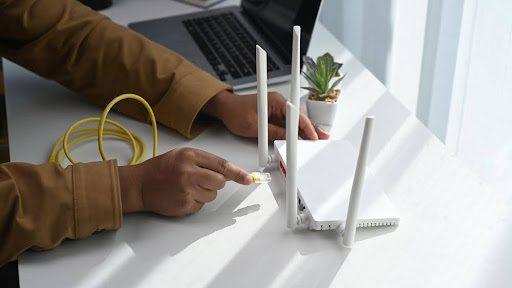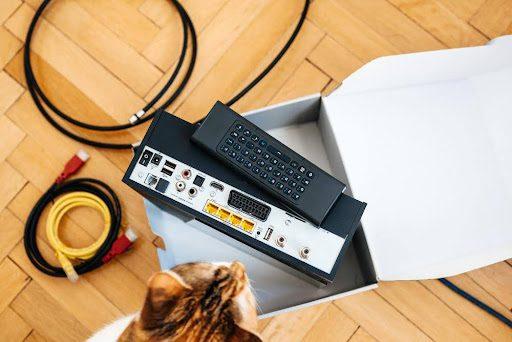Business
Understanding The Growing Importance Of Fiber Internet

Fiber internet service is quickly becoming an essential for the connected 21st-century home, and it’s easy to see why. With its unparalleled speeds and reliability, fiber supports everything from ultra-HD streaming to complex smart home setups to productive remote work.
Where did fiber internet come from, how does it work, and what makes it such a strong choice for our digital lifestyles? Here are the key things you need to know about fiber internet service — including how you can make it a part of your life.
Table of Contents
What Is Fiber-Optic Internet?
Traditional internet technologies like DSL and cable internet all use various forms of copper wires to transmit electromagnetic signals. Fiber is different: It uses cables made of ultra-thin glass strands to transmit data using pulses of light, which is both faster and more reliable than copper-based internet.
Technically, fiber isn’t new at all — it’s been the backbone technology of the internet for many years. Previously, however, the “last mile” data connections that went directly into homes always used coaxial cable or other copper technologies. What is new is “fiber to the home” (FTTH) service, which refers to fiber optic cables installed directly into residences.
FTTH opens up all kinds of exciting possibilities for the next era of digital communications. It’s fast, it’s secure, and it’s ideal for applications like gaming and remote work. Plus, it’s available in a wider variety of geographic areas than ever — so there’s a good chance it’s now in your city or town.
The Benefits Of Fiber
Let’s look at some of the major benefits of fiber in a little more depth.
-
Faster Speeds And Lower Latency
Download speeds for fiber internet are often comparable to a very fast and stable cable internet connection, with speeds around 1,000 Mbps or 1 Gigabit. (Some premium fiber plans can hit even faster top speeds.) But here’s where fiber has its biggest advantage over cable: Fiber connections are designed to offer symmetrical speeds, with uploads that are just as fast as their downloads.
That’s important, because most cable connections have upload speeds significantly below their download speeds. That can be a big problem for activities like video conferencing and online gaming, where high upload speeds are just as important as download speeds.
Fiber also boasts extremely low levels of latency. Again, this is crucially important for gaming and remote work, where lag can be a major detriment to performance. Between its vastly increased upload speeds and lower latency, fiber is the clear winner on speed.
-
Improved Reliability
Copper-based internet technologies are vulnerable to electromagnetic interference from all kinds of sources, especially weather events. Because they use light rather than magnetism, fiber optic cables are immune to such disruptions. A home with fiber can thus enjoy a more stable and consistent internet connection that won’t falter during a thunderstorm or other environmental disturbances.
Fiber also doesn’t suffer the same slowdown during peak usage hours that cable internet does. When many people in the same area use cable service at the same time — often from around 7 to 10 PM on weeknights — you can experience slower performance. The higher capacity of fiber means it offers consistent speeds at all hours of the day.
-
Future-Proof Performance
Current fiber networks are actually capable of much faster performance than they’re used for today. Fiber is so fast that today’s technology doesn’t need the fastest speeds it can reach — but the tech landscape won’t stay that way forever. As technology evolves and our digital needs grow, having a fiber connection means your home is ready to handle whatever new innovations come next.
-
Superior Security
Fiber is also inherently more secure than copper-based internet. Cable internet can be “tapped” using relatively simple methods, which can allow unauthorized users to intercept your data. In contrast, fiber-optic cables are extremely difficult to alter without destroying them, making fiber a smart choice for anyone who wants to maximize the security of their internet connection.
How To Get Fiber Internet
Historically, a lack of access has been the main obstacle to the wide adoption of fiber internet in the US. Fiber infrastructure is relatively cost-intensive to build, and the demand for true high-speed broadband wasn’t always as high as it is now.
Fortunately, it’s easier than ever to get fiber internet service in your home today. As of 2023, over half of all US households have access to at least one fiber internet provider. If you’re interested in upgrading to fiber, follow these steps to get started.
- Learn about fiber internet providers in your area.
Finding fiber service is as simple as typing “fiber internet near me” or a similar term into your preferred search engine. You can also check to see if your current internet provider offers fiber service in your area. In addition, verify that the provider offers fiber service at your specific address. Differences in fiber infrastructure can change availability from one neighborhood to another.
- Shop for a fiber package that meets your needs.
Browse the fiber packages available in your area and compare what they offer. Look for fiber service that fits your budget and meets your speed requirements. Read any associated contracts carefully, as they can put you on the hook for high cancellation penalties, rate increases, or other hidden fees. (Finding a provider that offers fiber without a long-term contract is often the best option.) It’s also wise to check customer reviews to gauge the reliability and customer service of the provider.
- Schedule your fiber installation.
Your fiber provider will help you coordinate an installation date for your fiber connection. Usually, you (or someone over 18) will need to be home to let the fiber installation technician into your property. A new fiber installation typically takes around four to six hours. Sometimes a technician may need to make a second trip to finish burying the cable, but you’ll be able to use your new fiber connection in the meantime.
- Confirm that your service meets your standards.

Once your connection is set up, run a free internet speed test to verify that your speeds are reasonably close to what you’re paying for. If you need help with your connection, contact your ISP — they’ll be glad to assist you with troubleshooting.
The future is here, and it’s fiber optic. Talk to your local ISPs today and find out if fiber is available in your area. If it’s not yet available, keep an eye out — fiber access is expanding every day!

-

 Business3 years ago
Business3 years agoHow to Do Long-Distance Moves with Children
-

 Travel2 years ago
Travel2 years agoQuick Guide: Moving To Santa Rosa?
-

 Real Estate3 years ago
Real Estate3 years agoWhy Dubai Festival City is a Great Neighbourhood for Young Learners
-

 Business3 years ago
Business3 years agoIs Guest Posting a Good Inbound Marketing Strategy?
-

 Business1 year ago
Business1 year agoThe Ultimate Guide To Thriving In Your Printing Franchise
-

 Business1 year ago
Business1 year agoExploring The Benefits And Challenges Of Restaurant Franchising
-

 Tech3 years ago
Tech3 years agoCyber Table That Will Change Your Life
-

 Lifestyle1 year ago
Lifestyle1 year agoDallas’ Hidden Gems: 6 Must-Try Restaurants Off The Beaten Path!









Recent Comments